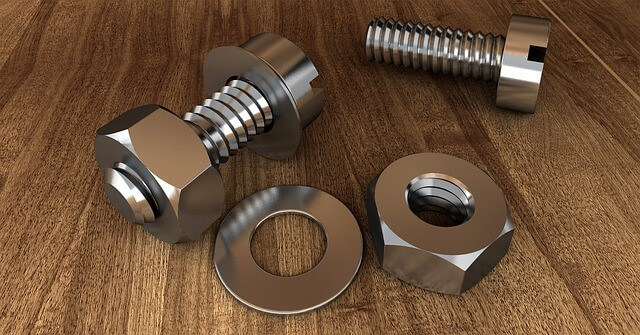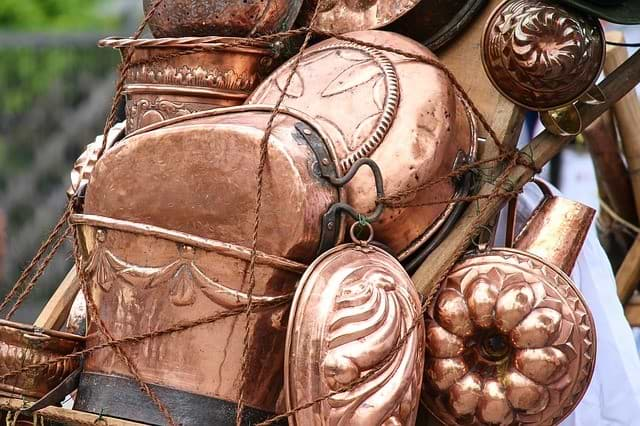Metals have the reputation of being the strongest material on Earth. There are not very many materials that can rival their strength. The only materials that can are the pure carbons, which are not as abundant and lack the necessary properties to resist breakage.

That being said, metals are not indestructible. Like everything else, they have a weakness, too. Specifically, they are not very good with a variety of liquids and acids, and sometimes other metals. When exposed to even a tiny drop of these substances, they will start corroding. The manner by which metals corrode depend on certain factors, including their composition and properties as well as the type of substance they are exposed to.
Types of Corrosion
Corrosion can be likened to a virus. It attacks the metal slowly until the metal is reduced to dust (a state where the molecules are completely disintegrated). It’s extremely important to understand how metal corrodes and where it corrodes from in order to come up with an effective solution to strengthen metal’s resistance. Here are some of the types of corrosion that we know of.
-
Uniform Attack.
The metal’s chemical or electrochemical reaction takes place consistently over its entire surface, causing it to become thinner or smaller over time. For instance, a piece of iron plate suffers the same degree of rusting on its whole surface.
-
Galvanic Corrosion.
Some metals are allergic to other metals. When immersed in a conductive solution, the potential difference of two different metals gets activated. This becomes dangerous for any or both of the metals when they are placed in contact with each other. The less resistant metal usually becomes even weaker to corrosion during this process, while the more resistant one becomes even more resistant.
-
Crevice Corrosion.
This type of corrosion happens when not all of the surface of a certain metal is protected or if there are holes, gasket surfaces, lap joints, surface deposits, and crevices, hence the name. Attack only occurs on the region that is exposed, leading to an intense localized corrosion.
-
Pitting.
Considered as one of the most destructive forms of corrosion, pitting comes in the form of holes, which range in size from tiny, almost invisible to large cavity. In fact, most pits are too small they appear like a rough surface, when in fact they extend to a few millimeters into the metal surface, making them more detrimental than they appear.
-
Selective Leaching.
Sometimes, corrosion only attacks specific metals. This can be troublesome if the metal it attacks is alloyed to another metal. When that happens the metal in question is selectively leached out from the alloy, leaving only a porous block made solely of the resistant metal, rendering it totally useless.
Dealing with Oxygen
While there are literally countless types of liquid that can potentially corrode metal, there’s one liquid that stands out as the most dreaded of all—water. It may not be as corrosive as most acids but its abundance is what makes it so vile. Whether it’s in the form of liquid or vapor, its impact on metals remains the same.
Technically, it’s not water that triggers the corrosion of metal, but the oxygen it contains, and different metals react to oxidation differently. Metals that contain iron, also known as ferrous metals, are the most reactive. The oxygen in water or moisture latches to iron to form iron oxide or rust.
This type of corrosion prompted by oxidation can be prevented or weakened using a number of methods. The most popular method is alloying iron with non-ferrous metals the exhibit anti-corrosive properties or non-metals that have the ability to repel oxygen. In the case of iron, a controlled amount of carbon is added to give it oxygen-repelling property, which forms steel as a result. Other metals, such as molybdenum and manganese are sometimes combined with steel to increase its corrosion resistance.
Oxidation of Non-Ferrous Metals
Unsurprisingly, iron or iron-containing alloys are not the only ones that react to oxidation in the form of corrosion. Some non-ferrous metals do, too, but in a completely different way. Instead of combining with every atom that makes up the material, oxygen only combines with the atom on the surface and grows thicker from there.
The best example of metals that react this way are copper and all its alloys. When copper makes contact with oxygen molecules from the air, it forms copper dioxide, but it stops on the surface. It doesn’t spread within the material. Instead, the copper dioxide that is now covering the exposed surface of copper reacts with oxygen to form copper oxide, and that becomes the thick greenish layer that protects copper from wear and further corrosion.
Good and Bad Things about Corrosion of Non-Ferrous Metals
Corrosion, generally, is considered a bad thing, because it destroys metals that could otherwise last for long or perform optimally throughout its functional life. For non-ferrous metals, however, corrosion is viewed quite differently, mainly because it doesn’t really affect their main properties. In fact, some find the result of the corrosion appealing, so much so that they even facilitate its occurrence. They think such characteristic produces an antique vibe that makes a great addition to a building’s aesthetics.
Then again, most people want their metal shiny. Sheen, after all, matches with all kinds of interior design. For industrial applications, a metal’s surface must be free from any kinds of corrosion to maximize its mechanical properties as well. Unfortunately, common non-ferrous metals, such as copper, brass, and bronze are very quick to tarnish when exposed to air. Fortunately, though, there are easy and effective ways to clean metal that even non-professionals can try.
Cleaning Tips for Metal
It may seem hard to remove but the tarnish, or even the patina, on your brass or bronze bars and plates is quite yielding. In fact, you can do so using everyday items found in your home. Of course, there are commercial metal polishing products that are available in your local hardware or furniture store when you prefer a better finish.
- Some of the products you can use to naturally clean your copper items include vinegar, ketchup, lemon, and baking soda. Before you apply any of them on the surface of your brass or bronze item, however, make certain that the item is thoroughly cleaned with no excess dirt or grime that can leave scratches after burnishing.
- Once the item is clean, apply as much of your chosen polishing agent as needed on its surface. Do this with your hand first to dislodge left-over stains and patina that weren’t removed during initial cleaning. Then wipe away excess polishing agent and let the remaining layer dry up a bit. Once dry, start scrubbing and buffing the surface of the item with a clean white cloth until the shiny surface reappears.
- To preserve the metal’s sheen after polishing, consider spraying with a clear lacquer. This is available in your local hardware store as well. The lacquer, however, is also prone to wear and tear so expect that it will thin out over time until the metal’s surface is exposed to the atmosphere again. Your best option is to just have to clean and polish the item regularly to preserve its pristine appearance.
That’s pretty much the basic method for cleaning metal. If you still want to know more about what to use to clean metal, particularly copper-based ones, you can always consult with bronze and brass suppliers like Rotax Metals. They sure know their way around metals and how to prolong their valuable properties.



